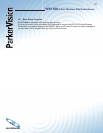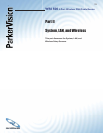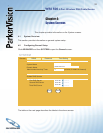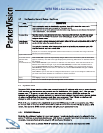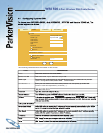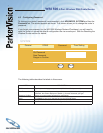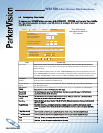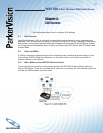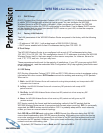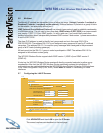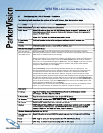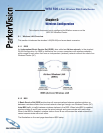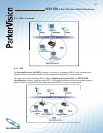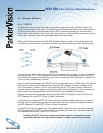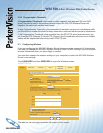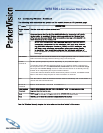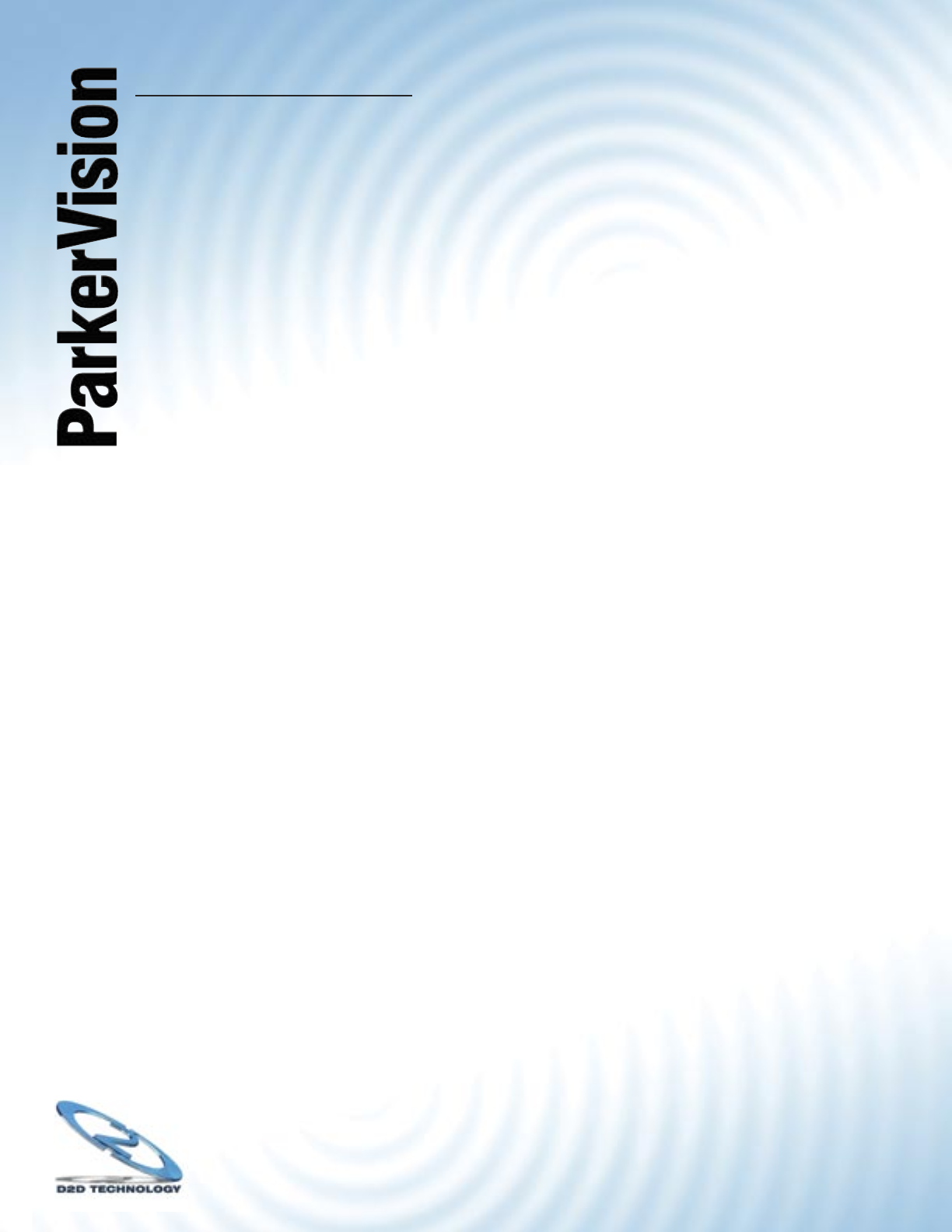
WR1500 4-Port Wireless DSL/Cable Router
®
38
5.3 DHCP Setup
DHCP (Dynamic Host Confi guration Protocol, RFC 2131 and RFC 2132) allows individual clients
to obtain TCP/IP confi guration at start-up from a server. You can confi gure the WR1500
Wireless Router as a DHCP server or disable it. When confi gured as a server, the WR1500
Wireless Router provides the TCP/IP confi guration for the clients. If set to None, DHCP service
will be disabled and you must have another DHCP server on your LAN, or else the computer
must be manually confi gured.
5.4 Factory LAN Defaults
The LAN parameters of the WR1500 Wireless Router are preset in the factory with the following
values:
• IP address of 192.168.1.1 with subnet mask of 255.255.255.0 (24 bits).
• DHCP server enabled with 8 client IP addresses starting from 192.168.1.33.
IP Pool Setup
The WR1500 Wireless Router is pre-confi gured with a pool of 8 IP addresses starting from
192.168.1.33 to 192.168.1.64. This confi guration leaves 31 IP addresses (excluding the WR1500
Wireless Router itself) in the lower range for other server computers, for instance, servers for
mail, FTP, TFTP, web, etc., that you may have.
These parameters should work for the majority of installations. If your ISP gives you explicit DNS
server address(es), read the embedded Web Confi guration Utility help regarding what fi elds need
to be confi gured.
5.5 RIP Setup
RIP (Routing Information Protocol, RFC 1058 and RFC 1389) allows a router to exchange routing
information with other routers. RIP Direction controls the sending and receiving of RIP packets.
When set to:
1. Both - the WR1500 Wireless Router will broadcast its routing table periodically and incorporate the RIP
information that it receives.
2. In Only - the WR1500 Wireless Router will not send any RIP packets but will accept all RIP
packets received.
3. Out Only - the WR1500 Wireless Router will send out RIP packets but will not accept any RIP
packets received.
4. None - the WR1500 Wireless Router will not send any RIP packets and will ignore any RIP
packets received.
RIP Version controls the format and the broadcasting method of the RIP packets that the
WR1500 Wireless Router sends (it recognizes both formats when receiving). RIP-1 is universally
supported; but RIP-2 carries more information. RIP-1 is probably adequate for most networks,
unless you have an unusual network topology.
Both RIP-2B and RIP-2M send routing data in RIP-2 format; the difference being that RIP-2B
uses subnet broadcasting while RIP-2M uses multicasting. Multicasting can reduce the load on
non-router machines since they generally do not listen to the RIP multicast address and so will
not receive the RIP packets. However, if one router uses multicasting, then all routers on your
network must use multicasting, also.
By default, RIP Direction is set to Both and RIP Version to RIP-1.



